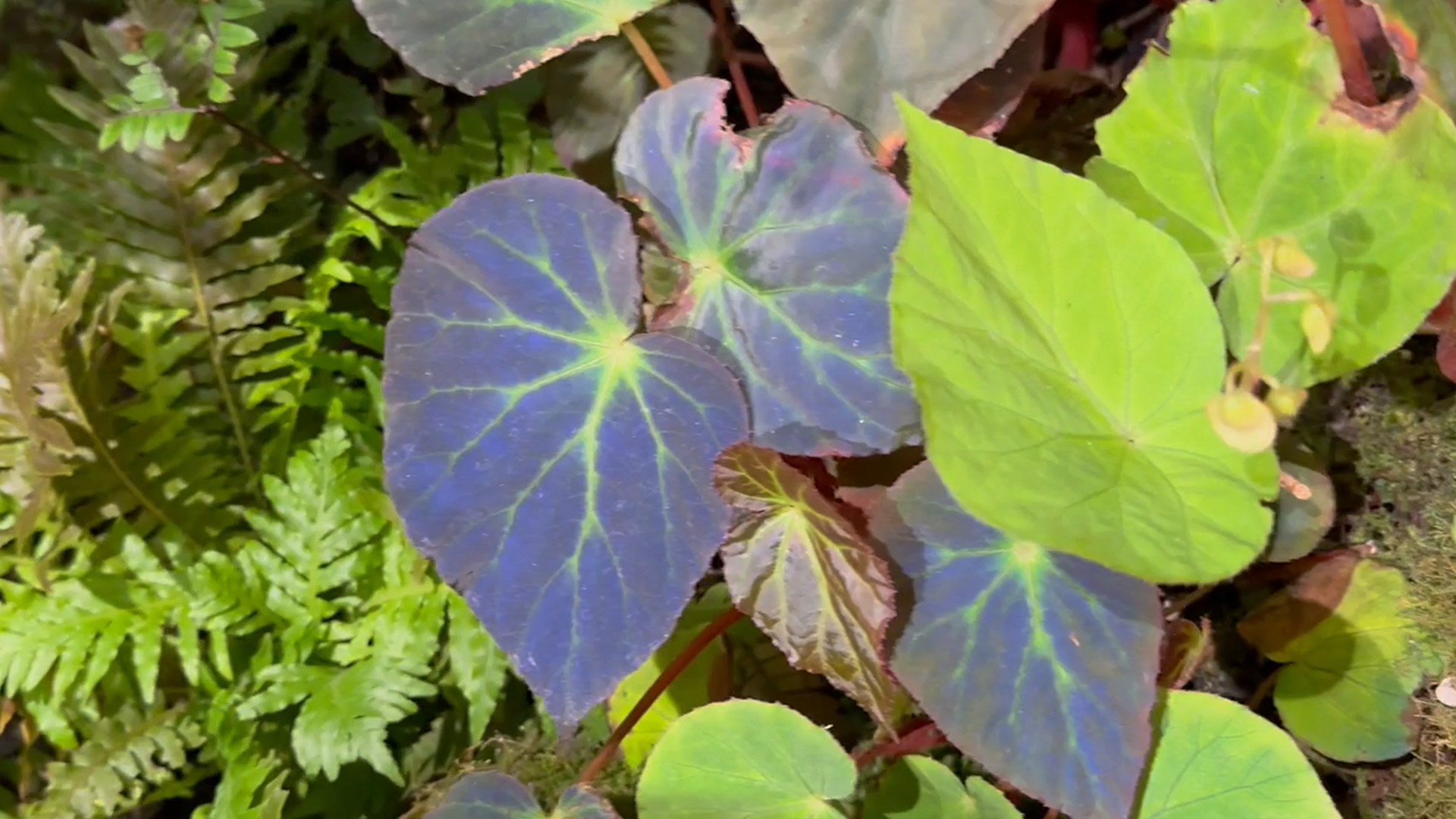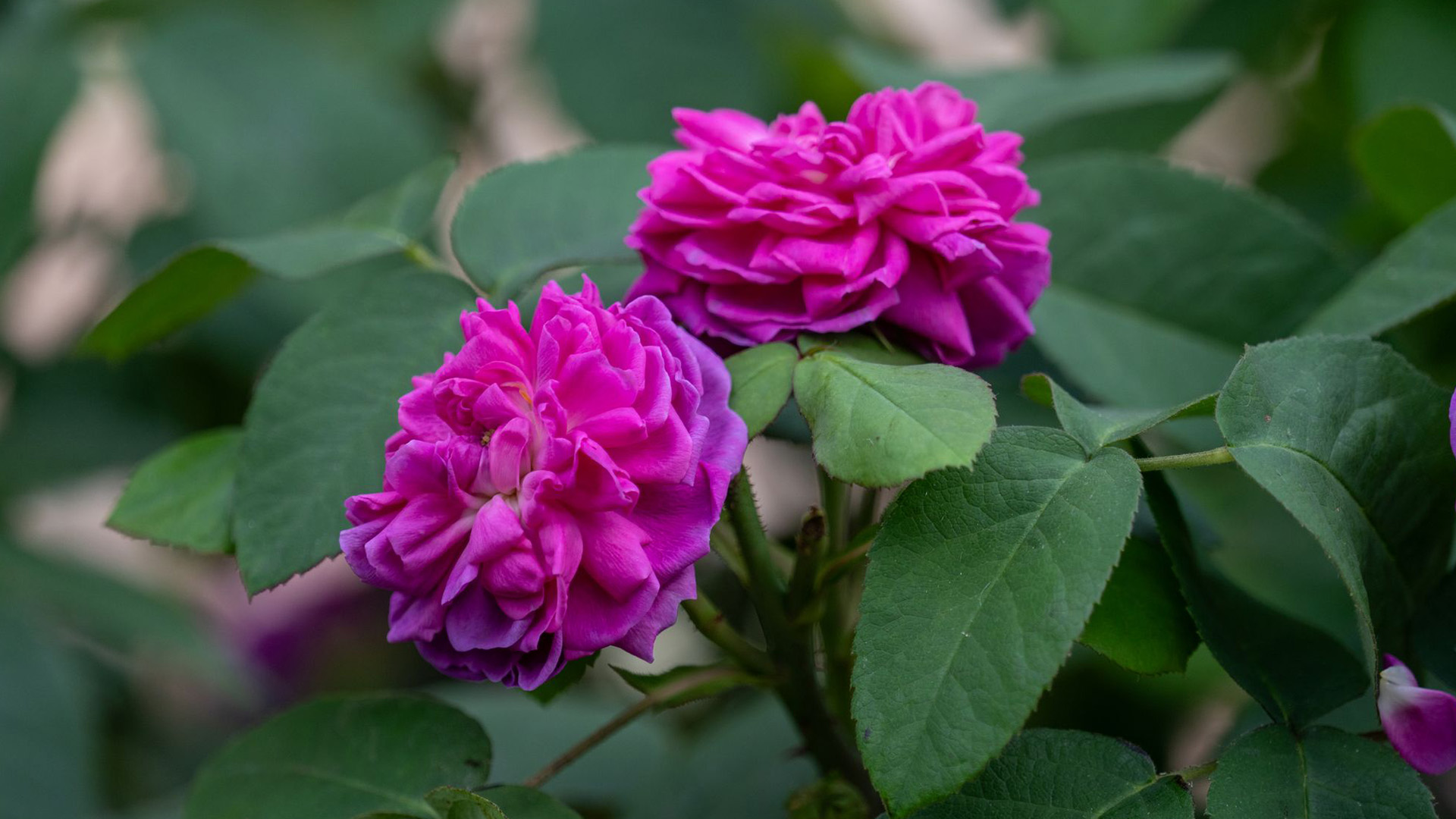Peacock Begonia (Begonia pavonina)

Begonia pavonina, belonging to the family Begoniaceae and commonly known as the peacock begonia, is a captivating plant native to the montane forests of Peninsular Malaysia. This unique species thrives in the moist, shaded, cool understorey of its tropical habitat, where it has adapted to low-light conditions. The peacock begonia is renowned for its strikingly beautiful iridescent foliage.
The peacock begonia is characterized by its broad, asymmetric leaves which display a remarkable blue iridescence under certain lighting conditions. This iridescence is not only aesthetically pleasing but also a subject of scientific interest. The leaves appear typically green under low light but reflect a vivid blue metallic color when viewed from different angles, particularly under bright, indirect light. This optical phenomenon is due to the crystalline structure of precisely stacked photosynthetic structures called thylakoids within the chloroplasts of cells at the leaf surface. These scatter light in blue or green wavelengths, much like the way tiny filaments in iridescent peacock feathers do, hence its common name!
This unique trait of foliar iridescence is thought to have several potential benefits. One hypothesis is that the blue iridescence aids in maximizing light absorption in extremely low-light environments, enhancing photosynthesis efficiency under these conditions. The iridescence may also serve as a form of camouflage, blending with the dappled light of the forest floor and thus protecting the plant from herbivores. Additionally, it might play a role in attracting pollinators, although this is yet to be proven.
 The comparison of the female (left) and male (right) flowers. There is only the female organ – the carpel - at the center of each of the female flowers, and only the male organ – stamens at the center of each of the male flowers. Two lobes of the three-lobed ovary are also visible on the base of the female flower at the far left of the left photo. In contrast, male flowers do not have an ovary at the base of each flower.
The comparison of the female (left) and male (right) flowers. There is only the female organ – the carpel - at the center of each of the female flowers, and only the male organ – stamens at the center of each of the male flowers. Two lobes of the three-lobed ovary are also visible on the base of the female flower at the far left of the left photo. In contrast, male flowers do not have an ovary at the base of each flower.
As to the flowers, the peacock begonia is a monoecious plant, meaning it has both male and female organs on the same individual, but on separate flowers. This allows for cross-pollination between two plant individuals, although self-pollination can still also occur. The male flowers are usually more numerous and are distinguished by their multiple stamens, while the female flowers are fewer in number and can be easily distinguished by their swollen tri-lobed ovary. This monoecious nature contrasts with dioecious plants, which have distinct male and female individuals. In dioecious species, each plant bears only one type of flower, requiring the presence of both male and female plants for pollination and reproduction.
In conclusion, the peacock begonia is a remarkable example of nature's ingenuity. Its dazzling blue leaves and its adaptability to its environment make it a subject of both horticultural admiration and scientific study. This plant not only enriches the biodiversity of its native habitat, but also provides valuable insights into the complex interactions between plant physiology and ecological conditions.
Come find this currently blooming begonia with uniquely iridescent foliage at the exit area of Cloud Forest’s Secret Garden!
Zeke Chen, Manager (Conservatory Operations)
Ever since his tiny hands could hold on to a small toy shovel and sowed the first apricot seed in the garden, the passion for plants has started to grow in Zeke’s heart.




/1000x1000-thumb-Teague%27s-Pleurothallis-1.jpg)